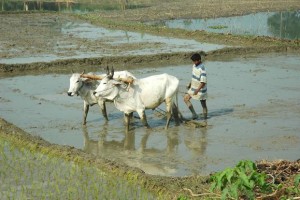The farm to fork chain: How to feed the world in three crucial steps
Time was when the world shook its head over lakes of milk and mountains of butter in Europe. That was because of chronic overproduction. But poor countries often have poor levels of agricultural production.
Post-harvest loss in the developing world is a major reason that tonnes of food goes to waste and millions of people remain hungry.
For farm to fork (or fingers) efficiency, there must be a properly linked supply chain. So here are three clear requirements:
1. Proper roads linking fields to markets
2. Trains and planes to move produce fast and efficiently to markets or processing plants
3. Electricity to keep produce at optimum temperature or dry grains quickly
These and related issues are on the agenda of the 2015 Milan Expo, which has a food focus, even though in the many months it’s run it’s mainly been talked about as a chance for countries to showcase themselves (and the way they cook and eat).
Back in 2012, the Global Action Platform (GAP), a university-business collaborative initiative that is trying to find new and smart ways to feed the planet, held the first global summit to frame issues for the Expo.
Its innagural programme has now metamorphosed into an annual summit on food, health, and prosperity.
From its headquarters in Nashville, Tennessee, GAP ponders such weighty issues as finding a way to balance agribusiness with primary agriculture in poor countries.
The other challenge is growing an agricultural system in a sustainable way, without degradation of land, water and air. Crop rotation, for instance, restores soil nutrients and our forefathers knew that and tended their land lovingly. But the industrial revolution — and the impartial processes that it triggered in some parts of the world — have resulted in a few broken links in that old chain.
GAP says that these issues have never been more important than today. The UN’s Food and Agriculture Organization estimates that the world needs to produce 70 per cent more food (43 per cent more grains and 75 per cent more meat) to feed the 10 billion people expected to be on our planet by the end of this century. This is probably less about population growth than you might think.
The three-billion increase in population from current levels seems huge but it’s not if you consider the massive growth in the last century. One-hundred years ago the global population was 1.5 billion. Today, it is seven billion. Just seven billion.
Even so, grow more, waste less is always a good strategy.


